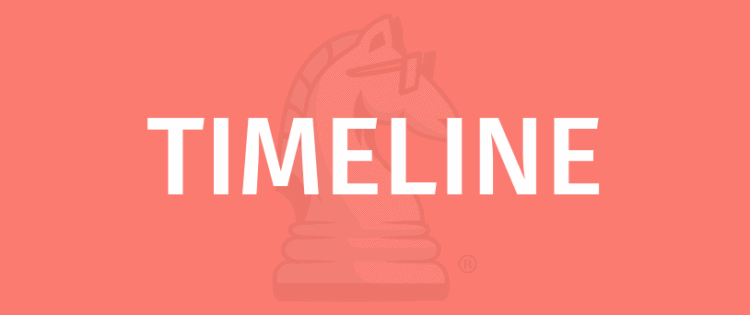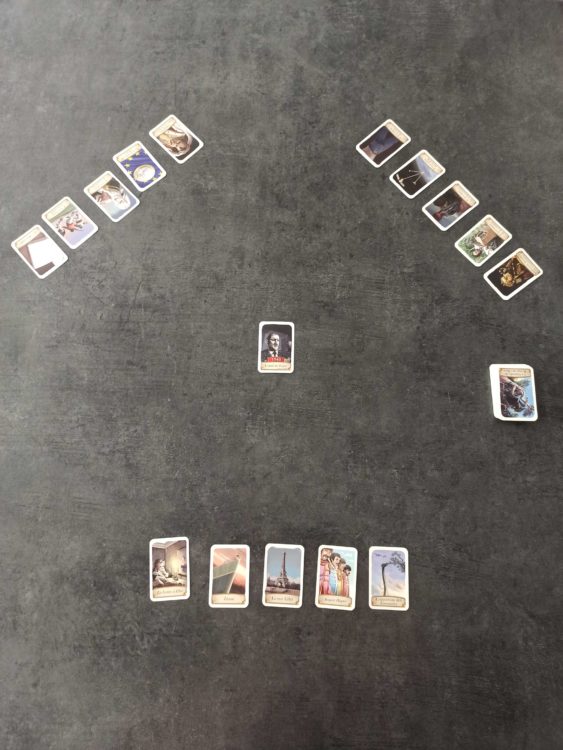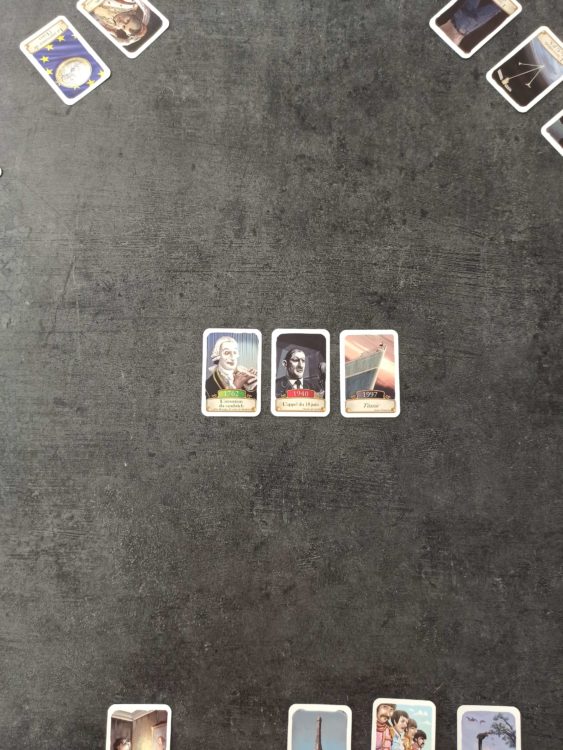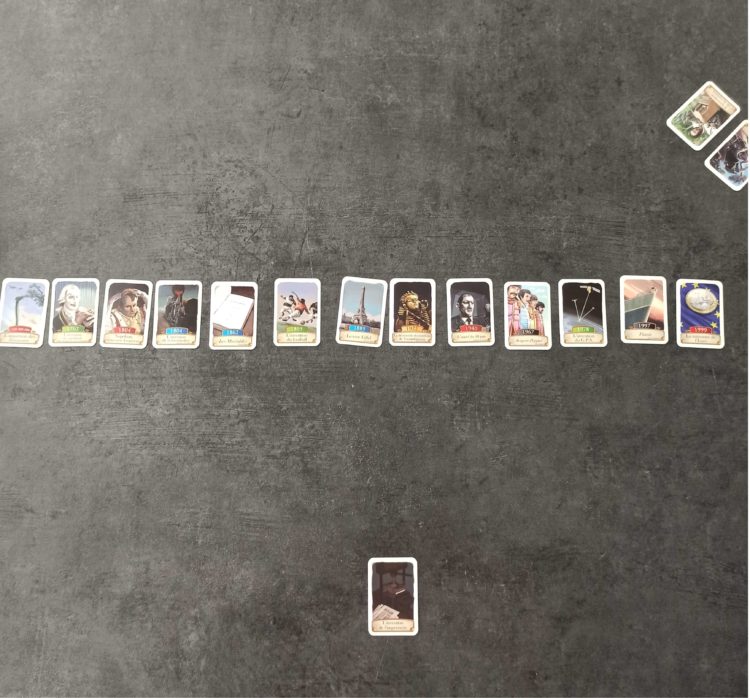
OBJECTIVE OF TIMELINE: The objective of Timeline is to be the only person who no longer has a card.
NUMBER OF PLAYERS: 2 to 8
NUMBER OF CARDS: 109 cards each with the name of the event and its illustration on the front, the same information plus the date of the event on the back.
RANK OF CARDS: cards will be sorted by date during the game
TYPE OF GAME: historical dates sorting game
AUDIENCE: teen, adult
HOW TO DEAL TIMELINE
Shuffle the cards.
Each player receives the number of cards shown below face down and places them in front of them. Under no circumstances should the player look at the back (the date side).
- 2-3 players: 6 cards
- 4-5 players: 5 cards
- 6-8 players: 4 cards
- note: players may by mutual agreement change the number of cards to be dealt, depending on their experience of the game.
The remaining cards are placed on the table to form a draw pile, with the date sides hidden.
The first card is drawn from the deck and placed in the centre of the playing area, turning it face up (date visible). This card will be the starting point of the timeline in which the players will place the cards they have in front of them.

HOW TO PLAY TIMELINE
The youngest will be the first player. Players take turns playing in a clockwise direction. The first player must place one of his cards next to the initial card (the one placed during the set-up):
- If he believes that the event on his card is older than the one on the original card, he places his card to the left of the original card.
- If he believes that the event on his card is dated after the event on the original card, he places his card to the right of the original card.
Once placed, the player turns his card over, date face up, to check that its date corresponds to the position it occupies in the timeline:
- If the card is in the right place, it is left in place with the date face up.
- If the card is misplaced, it is set aside in the box. The player must then draw the first card from the draw pile and place it face down in front of him/her, with his/her other cards.
It is then up to the second player (to the left of the first) to play.
- If the first player has placed his or her card correctly, the second player can choose between three places to place one of his or her cards: to the left of the two cards already placed, to their right, or between them.
- If the first player has placed his or her card incorrectly, the second player then has only two possibilities (as the first player did).
- If the second player places his card correctly, it remains in place, face up. The timeline is then rearranged so that there is a space between each card.
The game continues in the same way, each player in turn trying to insert one of their cards into the timeline.

Note: During the course of the game, a player may place a card with the same date as a card that has already been placed. In this case, the two cards must be placed side by side, regardless of the order.
HOW TO WIN
If, at the end of a round, a player is the only one to have placed his or her last card correctly, he or she is immediately declared the winner. If several players have placed their last card correctly during the same round, they remain in the game and the others are eliminated. The remaining players are then each dealt a card from the deck, and continue to play until only one player has placed his or her card correctly.

Enjoy! 😊
VARIATIONS
Timeline exists in several versions to vary the pleasures and areas of expertise: history of music, cinema, great discoveries and inventions, Star Wars, etc.
- Comprehensive Guide to the Board Game Go (weiqi, baduk) - January 23, 2024
- Are Creative Suites Changing Gaming - October 30, 2023
- How Classic Games Have Been Reimagined for Modern Audiences - October 5, 2023